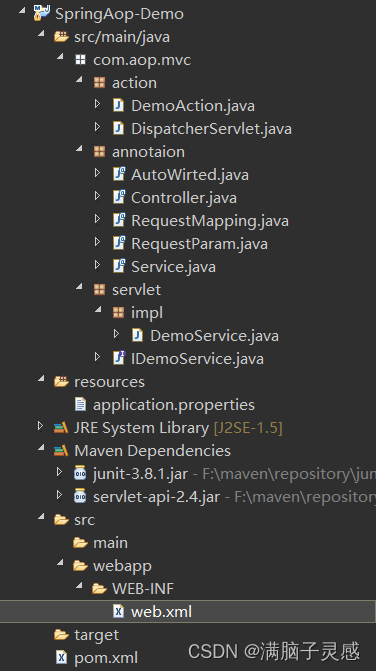本文介绍: 这个自定义的功能是参考一位大佬的帖子做出来的, 以此为基础加了一些优化, 但是我找不到大佬的帖子链接了, 如果有发现的请告诉我, 我在帖子上加一下, 以谢大佬指点之恩。//先定义图表容器, 至于图表所需要的js啥的, 请自行搜索教程, 不多赘述。…

//先定义图表容器, 至于图表所需要的js啥的, 请自行搜索教程, 不多赘述
<div id="timeCostDiv" style="height:300px; width:90%; margin-left:5%;" />created() {
this.loadTimeCost()
},loadTimeCost() {
const that = this
const param = { dateBegin: that.dateBegin, dateEnd: that.dateEnd, limit: 5, type: that.dateType }
timeCostStatistics(param).then(data => {
if (data) {
var dataList = []
// color: ['#fec12b', '#f3535f', '#2163db', '#a43971', '#00d0b0'],
// 第一个数值, 代表维度列数, 第二个数值是数据范围start, 第三个数值是数据范围end, 第四个数值是第几根柱子, 第五个数值代表当前维度列有几个柱子
// data.push({ name: '1', value: [0, 0, 120, 1, 4] })
dataList.push({ itemStyle: { normal: { color: '#fec12b' }}, name: '进场时间', value: [0, 0, data.timeCostStatistics[0].carApproachTimeCost, 1, 3] })
dataList.push({ itemStyle: { normal: { color: '#f3535f' }}, name: '检测时间', value: [0, 0, data.timeCostStatistics[0].carTimeCost, 2, 3] })
dataList.push({ itemStyle: { normal: { color: '#2163db' }}, name: '等候时间', value: [0, 0, data.timeCostStatistics[0].carWaitTimeCost, 3, 3] })
dataList.push({ itemStyle: { normal: { color: '#fec12b' }}, name: '进场时间', value: [1, 0, data.timeCostStatistics[0].trunkApproachTimeCost, 1, 3] })
dataList.push({ itemStyle: { normal: { color: '#f3535f' }}, name: '检测时间', value: [1, 0, data.timeCostStatistics[0].trunkTimeCost, 2, 3] })
dataList.push({ itemStyle: { normal: { color: '#2163db' }}, name: '等候时间', value: [1, 0, data.timeCostStatistics[0].trunkWaitTimeCost, 3, 3] })
dataList.push({ itemStyle: { normal: { color: '#fec12b' }}, name: '进场时间', value: [2, 0, data.timeCostStatistics[0].otherApproachTimeCost, 1, 3] })
dataList.push({ itemStyle: { normal: { color: '#f3535f' }}, name: '检测时间', value: [2, 0, data.timeCostStatistics[0].otherTimeCost, 2, 3] })
dataList.push({ itemStyle: { normal: { color: '#2163db' }}, name: '等候时间', value: [2, 0, data.timeCostStatistics[0].otherWaitTimeCost, 3, 3] })
for (var i = 0; i < data.timeCostShort.length; i++) {
dataList.push({ itemStyle: { normal: { color: '#a43971' }}, label: { show: true, position: 'top', formatter: '{b}', textStyle: {
fontSize: 10,
fontWeight: 10,
color: 'black'
}}, name: data.timeCostShort[i].carNum, value: [3, 0, data.timeCostShort[i].minute, (i + 1), data.timeCostShort.length] })
}
for (var a = 0; a < data.timeCostLong.length; a++) {
dataList.push({ itemStyle: { normal: { color: '#00d0b0' }}, label: { show: true, position: 'top', formatter: '{b}', textStyle: {
fontSize: 10,
fontWeight: 10,
color: 'black'
}}, name: data.timeCostLong[a].carNum, value: [4, 0, data.timeCostLong[a].minute, (a + 1), data.timeCostLong.length] })
}
const titleData = ['轿车', '货车', '其它车辆', '用时最短', '用时最长']
setTimeout(() => {
// 加载图表
that.loadTimeCostHistogramCharts(dataList, titleData)
}, 1000)
}
}).catch(e => {
this.$message({
type: 'error',
message: '请求失败!'
})
})
},loadTimeCostHistogramCharts(dataList, titleData) {
var chartDom = document.getElementById('timeCostDiv')
var myChart = echarts.init(chartDom)
console.log(dataList)
const option = {
tooltip: {
trigger: 'item'
},
grid: {
bottom: '10%',
width: '90%',
left: '5%'
},
legend: {
data: titleData,
y: 'top',
left: 'center'
// padding: [0, 0, -10, 0] // 调整标签位置 (上 右 下 左),
},
xAxis: {
type: 'category',
data: titleData,
splitArea: {},
splitLine: { show: false }
},
yAxis: {
type: 'value',
axisLine: {
show: false
},
axisTick: {
show: false,
alignWithLabel: true
}
},
series: [
{
type: 'custom',
renderItem: this.renderItem,
itemStyle: { normal: { opacity: 0.8 }},
encode: { y: [1, 2], x: 0 },
data: dataList
}
]
}
option && myChart.setOption(option)
const listener = function() {
myChart.resize()
}
EleResize.on(document.getElementById('timeCostDiv'), listener)
},renderItem(params, api) {
// api.value(x), x是每一个data数组的下标数据 例: data: [0, 100, 2, 3], x是0, 那它就会取第一个数值0, x是1, 则会取第二个值100, 每个data第一个数值代表的是维度列, 代表这个数据在第几个维度列中
const categoryIndex = api.value(0)
const start = api.coord([categoryIndex, api.value(1)])
const end = api.coord([categoryIndex, api.value(2)])
const num = api.value(4) // 每个系列柱子数
let width = api.size([0, api.value(2)])[0] * 0.3
if (num > 3) {
width = api.size([0, api.value(2)])[0] * 0.5
}
const currentIndex = api.value(3)
const isOdd = num % 2 === 0
const midN = isOdd ? num / 2 : (num + 1) / 2
var rect = ''
width = width / num
let rectX = start[0] - width / 2
const FIXED_WIDTH = 10 // 柱子间距
// 数据处理,结构为 { itemStyle: { normal: { color: 'lightgreen' } }, name: '2011', value: [0, 0, 150, 2, 5] }
// 其中value 分为五个维度,分别为{系列项}(从0开始)、y轴起始值(均为0)、实际值、同系列中索引值(从1开始)、同系列数据项总数
// 当前纬度列柱子总数大于1
if (num > 1) {
// 当前柱子总数为偶数时
if (isOdd) {
// 当前竹子的下标小于等于 midn时
if (currentIndex <= midN) {
// 中位数左侧
rectX =
start[0] - width / 2 - width / 2 + (currentIndex - midN) * width - FIXED_WIDTH * (midN + 1 - currentIndex)
} else {
// 中位数右侧
rectX =
start[0] - width / 2 + width / 2 + (currentIndex - midN - 1) * width + FIXED_WIDTH * (currentIndex - midN)
}
} else {
rectX = start[0] - width / 2 + (currentIndex - midN) * (width + FIXED_WIDTH)
}
}
rect = {
type: 'rect',
shape: echarts.graphic.clipRectByRect(
{ x: rectX, y: end[1], width: width, height: start[1] - end[1] },
{
x: params.coordSys.x,
y: params.coordSys.y,
width: params.coordSys.width,
height: params.coordSys.height
}
),
style: api.style()
}
return rect
},这个自定义的功能是参考一位大佬的帖子做出来的, 以此为基础加了一些优化, 但是我找不到大佬的帖子链接了, 如果有发现的请告诉我, 我在帖子上加一下, 以谢大佬指点之恩。非常感谢, 欢迎各路大佬前来讨论, 感激不尽。
原文地址:https://blog.csdn.net/weixin_40463857/article/details/126158538
本文来自互联网用户投稿,该文观点仅代表作者本人,不代表本站立场。本站仅提供信息存储空间服务,不拥有所有权,不承担相关法律责任。
如若转载,请注明出处:http://www.7code.cn/show_21802.html
如若内容造成侵权/违法违规/事实不符,请联系代码007邮箱:suwngjj01@126.com进行投诉反馈,一经查实,立即删除!
主题授权提示:请在后台主题设置-主题授权-激活主题的正版授权,授权购买:RiTheme官网
声明:本站所有文章,如无特殊说明或标注,均为本站原创发布。任何个人或组织,在未征得本站同意时,禁止复制、盗用、采集、发布本站内容到任何网站、书籍等各类媒体平台。如若本站内容侵犯了原著者的合法权益,可联系我们进行处理。






